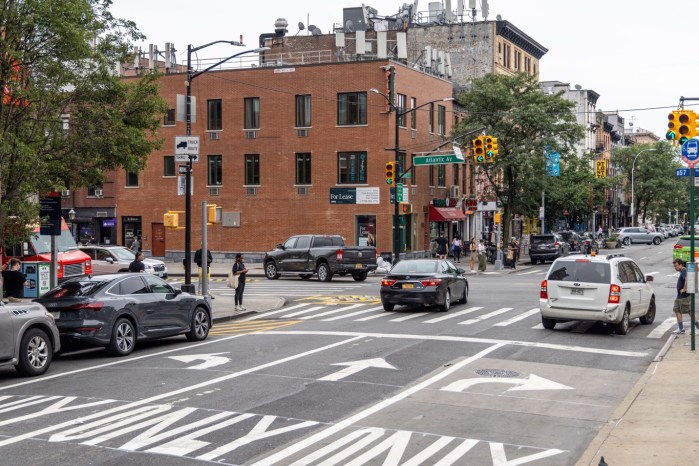Fort Greene is Brooklyn’s most treacherous bicycling neighborhood, according to the city’s most-recent bike crash data.
Eight of the 21 most accident-prone Brooklyn intersections are located in Fort Greene–Clinton Hill — and residents think they know why.
“There’s no respect for bike lanes here,” said Cassidy Vare, owner of Bespoke Bicycles, who said drivers constantly speed on the narrow streets and often double-park in lanes. “It’s crazy.”
Roughly every two weeks, Vare said, a flustered cyclist limps into his Lafayette Street shop, seeking repairs on a car-crunched bicycle — often just minutes after an accident.
The data back up Vare, revealing that 25 of 62 serious bike accidents were in the neighborhood.
The statistics, compiled by the Department of Transportation, are from intersections with at least three bike crashes during 2008 and 2009, the latest available years. But the numbers confirm a simple fact of life for cyclists: the more bikers, the more crashes.
“Fort Greene is en route to Manhattan — and the more cyclists you have, in general, the more accidents you see,” said Michael Murphy, a spokesman for the cycling advocacy group Transportation Alternatives. “But, really, there are so many factors to consider.”
One factor could be the neighborhood’s historic hostility to bike lanes, which dates back to 2006, when locals rejected five miles of new bike lanes along Carlton and Willoughby avenues.
Earlier this year, residents objected to a city plan for a bike lane on Lafayette Avenue, and the plan was scrapped.
Still, it’s unclear if bike lanes help or hurt. Of the 25 “bike injury crashes” — cases in which cyclists report being physically injured during a collision with another vehicle — about half of the Fort Greene-Clinton Hill cases took place on posted cycle routes.
Indeed, the most precarious intersection in Fort Greene is Myrtle Avenue at Navy Street, with four reported bike injury cases in 2009. Both streets have bike lanes. Nearby Navy Street at Tillary Streets and DeKalb Avenue at Washington Avenue each had three cases.
That doesn’t surprise Diane Davidson, an analyst at the National Transportation Research Center, a non-profit that offers government consulting.
“Bike lanes don’t necessary improve safety at an intersection,” she said. “You still have to conduct a turning motion and the stripe doesn’t extend where streets meet. … It can provide a false sense of security.”
And it gets worse when you consider that most people don’t file a police report, said Vare.
“It happens more than you’d think,” he said.






















